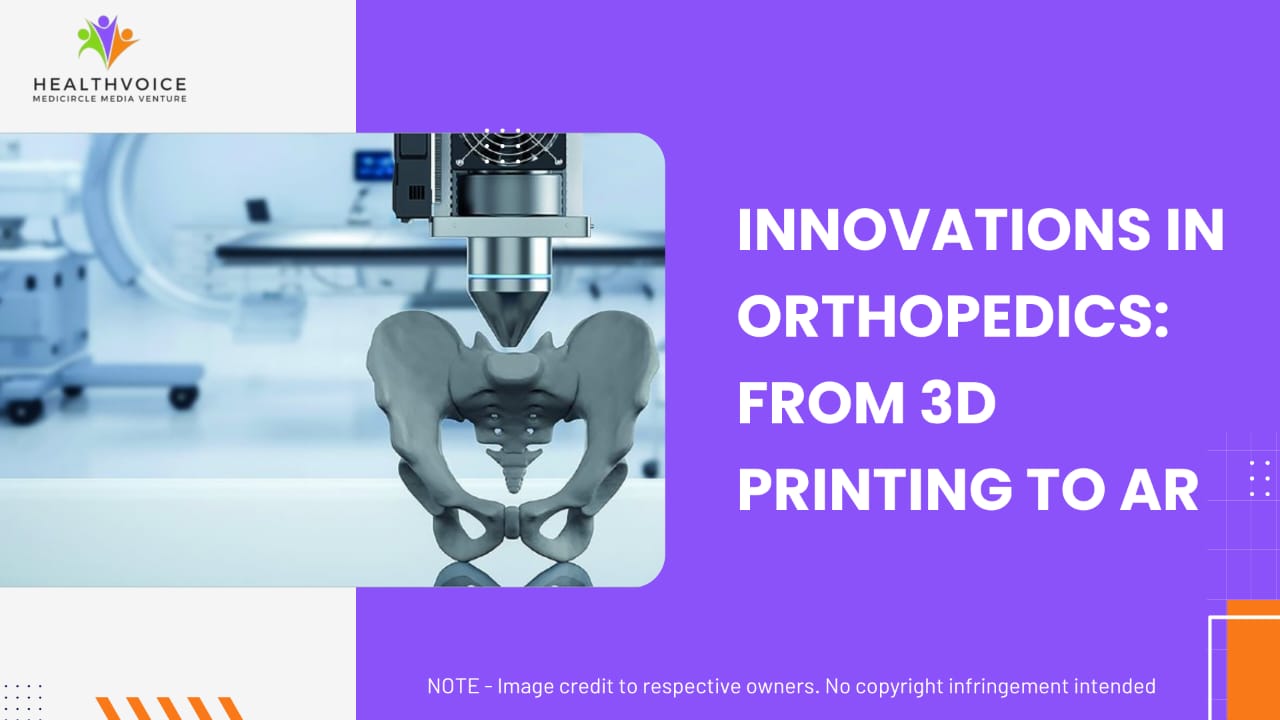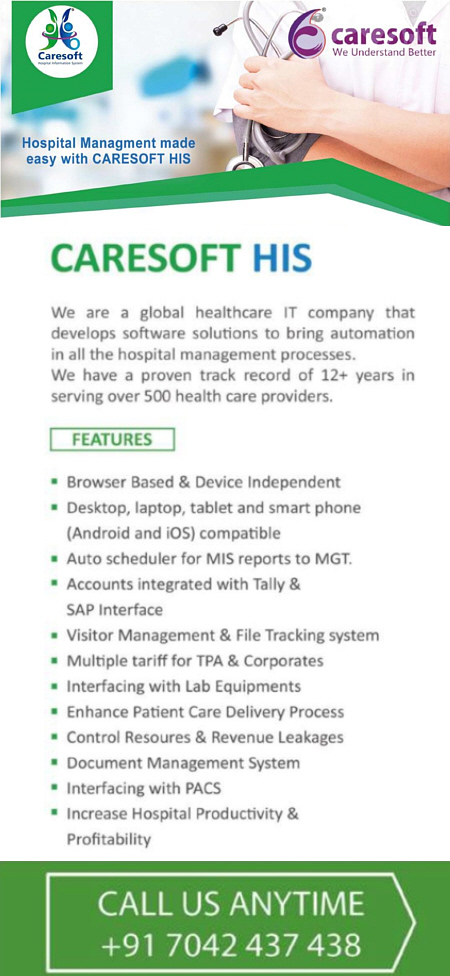Innovations in Orthopedics: From 3D Printing to AR
3D printing and augmented reality are transforming orthopedic surgery by enabling customized planning, precise execution and faster recovery through patient specific models, implants and real time surgical guidance.

Orthopedic care has always been a delicate balance between knowledge and skill. A surgeon must understand the intricate landscape of bones and joints, often from flat, two dimensional scans and then plan a journey to restore function and relieve pain. It is a field built on precision. Today, that precision is being redefined, moving away from standardized approaches to something far more personal. The catalysts for this change are two powerful technologies: 3D printing and augmented reality (AR). They are not just new tools; they are reshaping the entire patient experience, offering a future of customized care and remarkable recoveries.
Think about the last time you had to assemble complex furniture with a vague diagram. Now, imagine if you had a perfect, physical replica of the final product to guide you. This is what 3D printing offers to an orthopedic surgeon. It brings the hidden world inside our bodies into the light, making it tangible and understandable before a single incision is made.
Power of 3D printing:
Blueprint to bone:
The magic of 3D printing in medicine starts with familiar medical scans. A CT or MRI scan acts as the digital blueprint. Specialized software then translates this data into a detailed virtual model. This is where the physical transformation begins. A 3D printer meticulously builds the model, layer by layer, using various materials. The result is a life size, exact replica of a patient's specific bone structure, complete with every unique curve, fracture or deformity.
For a surgeon, this is a game changer. Instead of interpreting shadows on a screen, they can hold the anatomy in their hands. They can rotate it, examine it from every angle and feel the specific challenges they will face. This hands-on preview allows them to walk through the entire procedure beforehand, identifying the optimal path and anticipating potential hurdles. It turns surgery from a reactive process into a thoroughly planned mission.
Better outcomes:
The advantages of this approach are profound. When a surgeon can practice on a model, the actual operation tends to be faster and more efficient. Studies have consistently shown that the use of 3D printed models is linked to shorter surgery times and reduced blood loss.
In many cases, holding the model changes the surgical plan entirely. Surgeons might select a different implant or adjust their technique based on what the physical model reveals. This rehearsal builds confidence and competence. For patients, it demystifies the process. Being able to see and hold a model of their own bone provides a clear understanding of what is wrong and how it will be fixed, replacing fear with clarity.
Personalized orthopedic tools:
Surgical guides:
The application of 3D printing goes beyond practice models. It enables the creation of patient specific instruments (PSIs). Think of these as custom made stencils or jigs designed to fit perfectly onto a patient's unique bone anatomy during surgery. These guides direct the surgeon’s tools, ensuring cuts are made in the exact right place and implants are positioned with incredible accuracy.
The data supporting these tools is compelling. Research reviews indicate that procedures using these personalized guides often lead to better alignment and improved patient recovery compared to standard techniques. In complex operations like knee replacements, this precision is invaluable, simplifying steps that were once considered highly difficult.
Implants, made for you:
Perhaps the most significant breakthrough is the ability to create truly personalized implants. Off the shelf implants come in a limited range of sizes, which can sometimes mean a compromise in fit. A 3D printed implant is designed from the ground up to match the patient's anatomy seamlessly.
These custom implants are typically made from biocompatible materials like titanium. The printing process itself allows for the creation of a porous surface texture. This is a critical feature. Over time, the patient's living bone tissue can grow into these tiny pores, essentially locking the implant into place and creating a stronger, more durable and more biological integration. For patients who have suffered significant bone loss or need complex revision surgery, these custom implants are not just an improvement; they are often the only viable solution.
Augmented reality advantage:
Seeing through the skin:
If 3D printing provides the map before the journey, augmented reality provides the GPS during it. AR does not replace the real world; it enhances it. By wearing special glasses or using a display system, a surgeon can look at a patient and see digital information overlaid onto their body. This could be the precise location of a fracture, the planned trajectory for a screw or the outline of a tumor hidden from the naked eye.
This technology allows a surgeon to maintain their focus entirely on the patient. There is no need to constantly glance away at a separate screen, mentally translating a 2D image into a 3D reality. The necessary guidance is projected directly into their line of sight.
AR in action:
The practical benefits of AR are being realized in operating rooms today:
Spine surgery: Placing screws along the spine is a high stakes procedure with little room for error. AR navigation systems act as a precision guide, helping surgeons achieve near perfect placement and significantly reducing the risk of damaging sensitive nerves.
Fracture repair: Setting complex fractures often requires frequent X-rays to check the position of screws and plates. AR systems can dramatically cut down on this radiation exposure by giving the surgeon constant, visual feedback without the need for repeated imaging.
Joint replacement: The long term success of a hip or knee replacement depends heavily on the perfect positioning of the implant. AR can project the ideal alignment directly onto the surgical site, acting as a real time guide to ensure everything is placed exactly as planned.
This X-ray vision lightens the mental load on the surgeon, allowing them to work with greater confidence, efficiency and accuracy.
Integration in action:
The real power of these innovations emerges when they are used together. They are not isolated gadgets but interconnected parts of a new surgical workflow. The 3D digital plan is the common thread, it is the source file for the 3D printed model, the blueprint for the custom guide or implant and the digital map that the AR system projects.
Looking ahead, the impact of these technologies will only grow. They are making orthopedic care safer, more predictable and deeply personal. Furthermore, 3D printed models are becoming incredible tools for patient education and for training new surgeons, creating a ripple effect of understanding and skill.
We are witnessing a fundamental shift in orthopedics. It is a move away from approximation and toward exactness. These tools are empowering medical professionals to provide care that is tailored to the individual, promising not just to fix what is broken, but to restore a quality of life that patients thought they might have lost for good.
HealthVoice.in is committed to bringing you clear, reliable information about the latest advancements in medical care, helping you make informed decisions about your health journey.
#OrthopedicInnovation #DigitalSurgery #SmartHealthcare #MedicalTechnology #FutureOfSurgery #HealthcareInnovation #ARinHealthcare #MedTechIndia #HealthcareRevolution #OrthopedicCare #HealthcareTransformation #MedicalAdvancements #InnovationInMedicine #SurgicalTech #HealthVoice #FutureOfMedicine #TechInHealthcare
